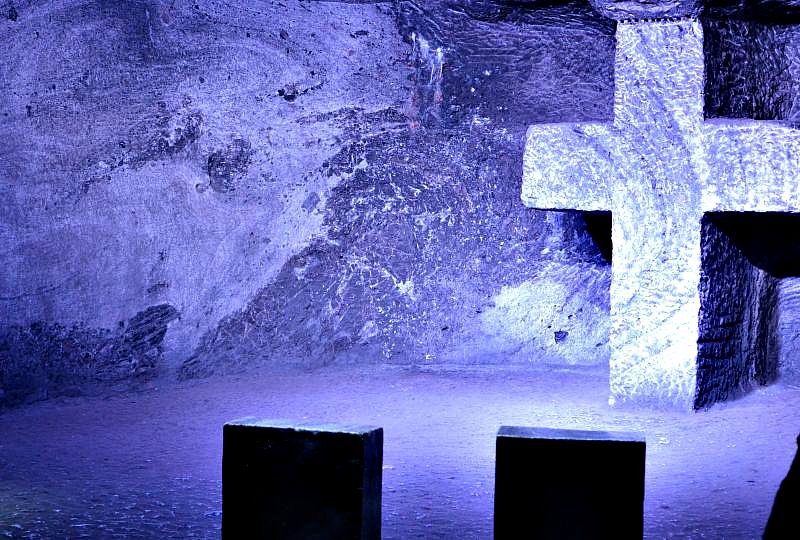
Pope Francis recently came out and said during one of his speeches that “one can be spiritual but not religious” adding that, for some “nature can be a church.” Well, when it comes to the Salt Cathedral in Zipaquira, nature quite literally is the church.
Religion, particularly Catholicism, is a way of life in Colombia. Religious belief has a tight grip on everything from personal relationships to family values, so it is no surprise that the country’s natural wonder is a 250 million year old mountain which has been converted into one of the world’s largest underground cathedrals.
This mountain, in the small town of Zipaquira, to the north of Bogota, has been mined for thousands of years. Initially by the local indigenous people, the Muiscas, who were the first to discover the salt deposits in the area. They used ancient methods to extract salt from this mountain through rivers before the Spanish came along and began mining it.
If you’re wondering how this massive deposit of salt formed so far inland in Colombia, well, it’s because of the plates under the ocean were sliding around all over the place some 250 million years ago. The land rose up where there was previously water, which meant the surrounding area dried up, leaving a salty mass beneath layers of earth. Now the salt is as hard as rock and, yes, if you lick the walls of the underground cathedral you’ll note that it is indeed very salty.
We were heading to the Salt Cathedral after our spiritually-charged visit to Guatavita Lake with our guide Alejandro from Destino Bogota. Could the Salt Cathedral really match the incredible experience we had at this sacred lake? It certainly had a lot to live up to!
The Salt Cathedral is actually part of a larger theme park which has a climbing wall inspired by the Ceiba tree, mining activities and even a food court, but the cathedral itself is an elegant piece of infrastructure and an impressive feat of engineering.
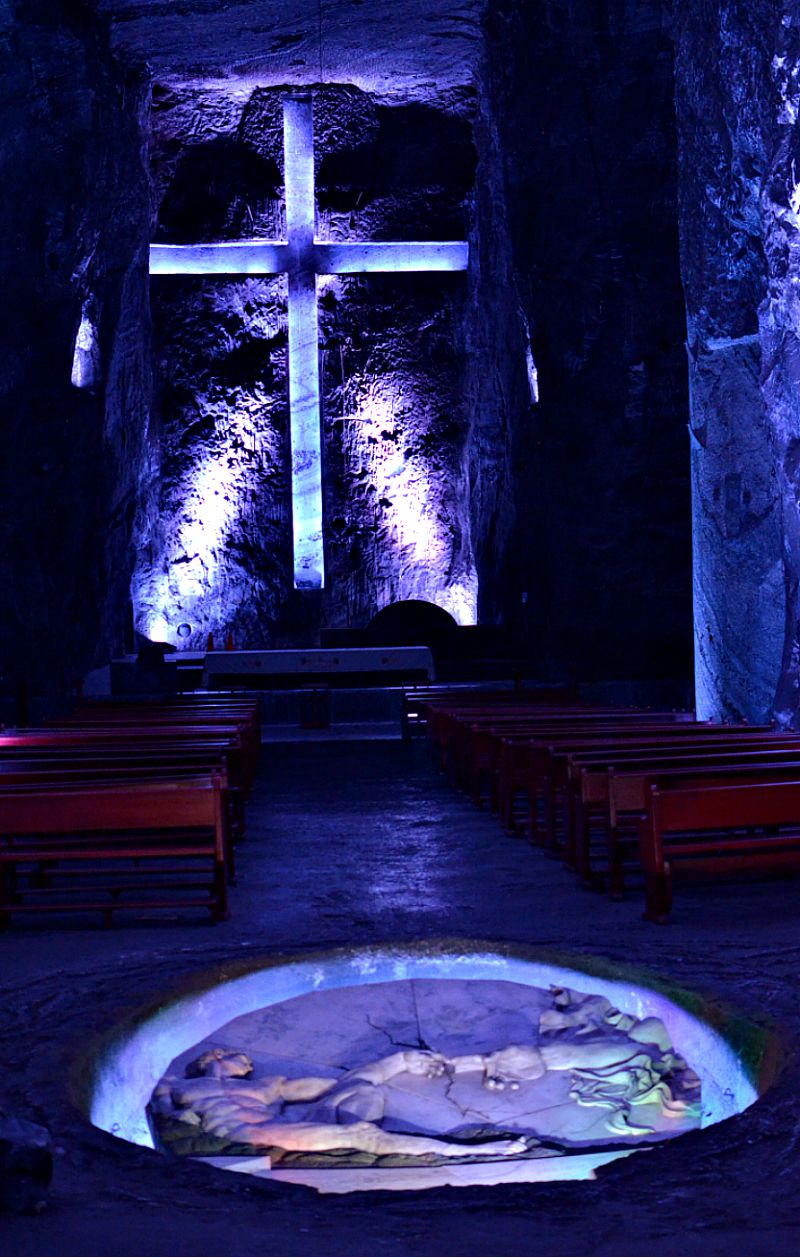
The Salt Cathedral as we know it today was opened in 1995. Prior to 1995, a cathedral was built by the miners that worked in the tunnels in 1932.
Then in 1950 another project to extend the cathedral began. Dedicated to Virgin of the Rosary of Guasa, the patron saint of miners, the cathedral was then shut down in 1990 because of safety concerns.
But the Salt Cathedral is an impressive monument and one that the locals couldn’t bare to part with. In the early ’90s a national contest was held with close to 50 Colombian architectural firm vying for the chance to give the cathedral a much needed face lift.
A gentleman by the name of Roswell Garavito Pearl won the rights and it’s thanks to him that Salt Cathedral takes on the life it does today.
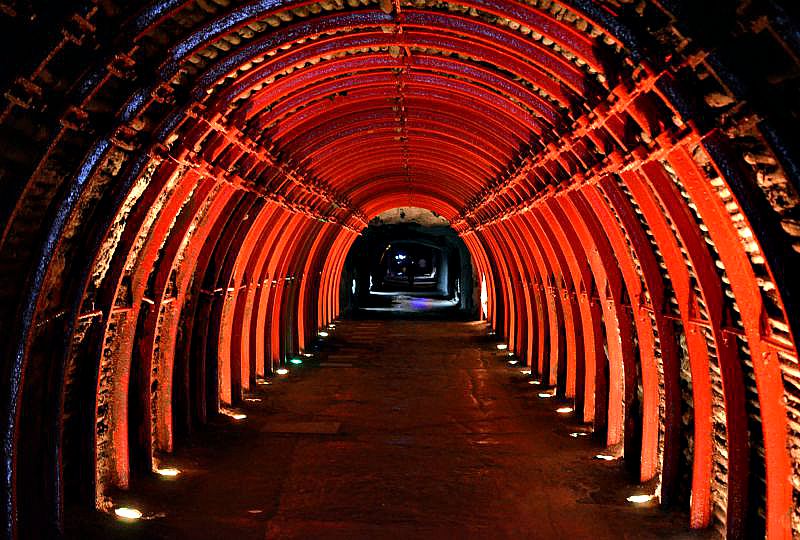
As you enter the deep and illuminated tunnel you first come across the 14 stations of the cross. There are a series of sculptures which are a representation of Jesus’ experiences in the lead up to his crucifixion and then his rise from the dead.
Alejandro, our guide, goes on to describe the sculptures to us. Each one represents Christ as the cross itself. Often the cross is brightly glowing thanks to the multi-coloured light show, others are only partially sculpted, emerging from its cold block of salt.
“A Brazilian couple I once did a tour here with said that if you stand on this step and look through the tunnel you can see a shadow of Jesus crucified on the cross,” Alejandro says, motioning to the deep expanse of black space that extended out in front of us.
It’s intimidating like the depth of the ocean, you can’t see more than a few meters in front, who knows what lies ahead in the black abyss in front of us.
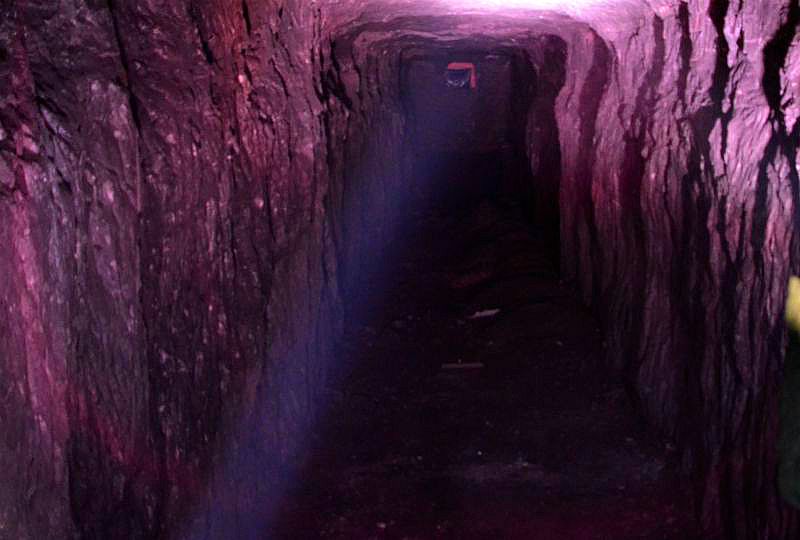
Soft music plays, adding the the mystery and the romanticism of the Salt Cathedral. I find myself walking slower than usual, looking more pensive than usual, taking everything in a little more carefully than usual.
My partner, who grew up Muslim and is anything but religious, says, “Even I can feel the power of this place,” meaning that he couldn’t help but be moved by the lights, the music, the sculptures and the all-over feel of the underground place of pilgrimage. It’s all very impressive, very beautiful.
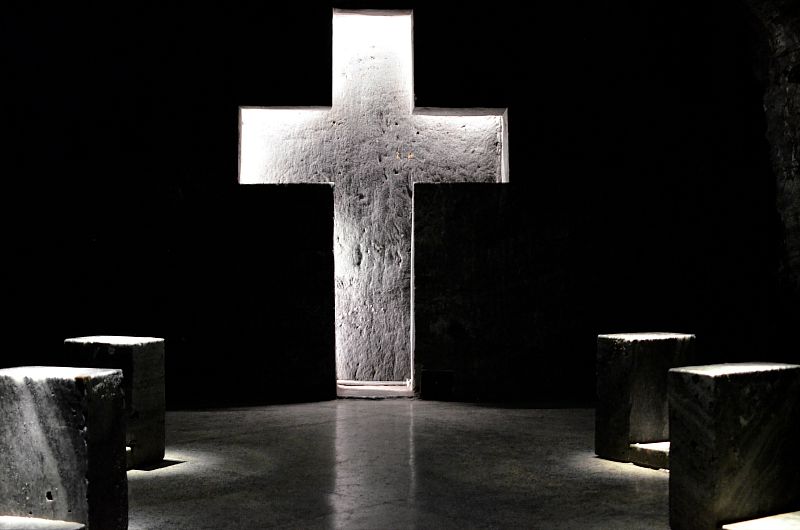
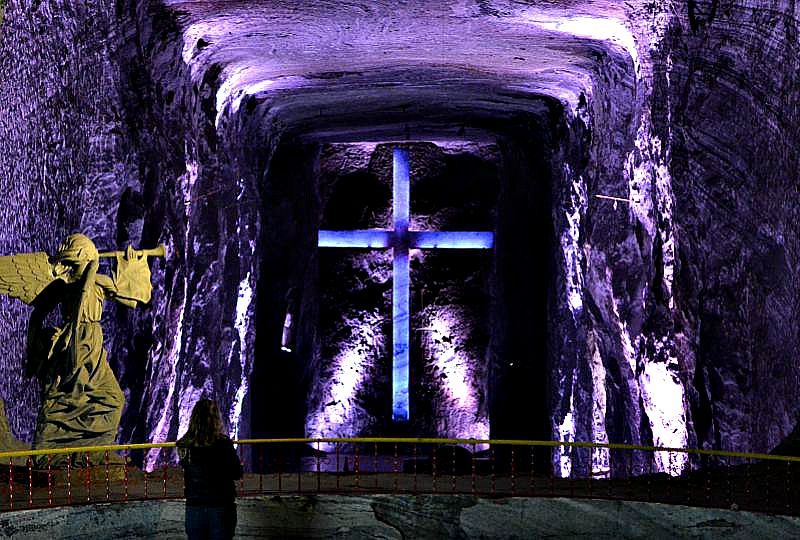

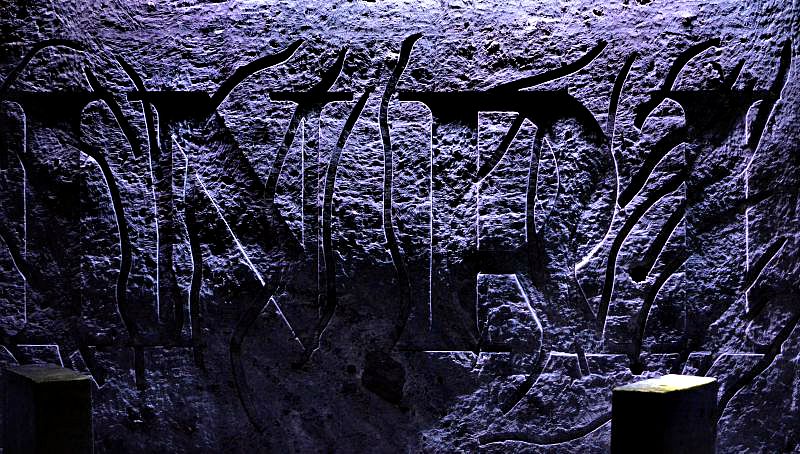
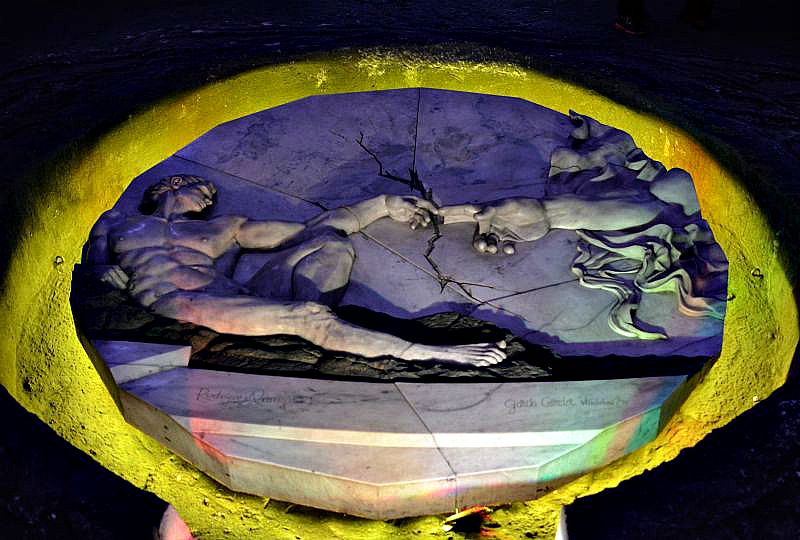
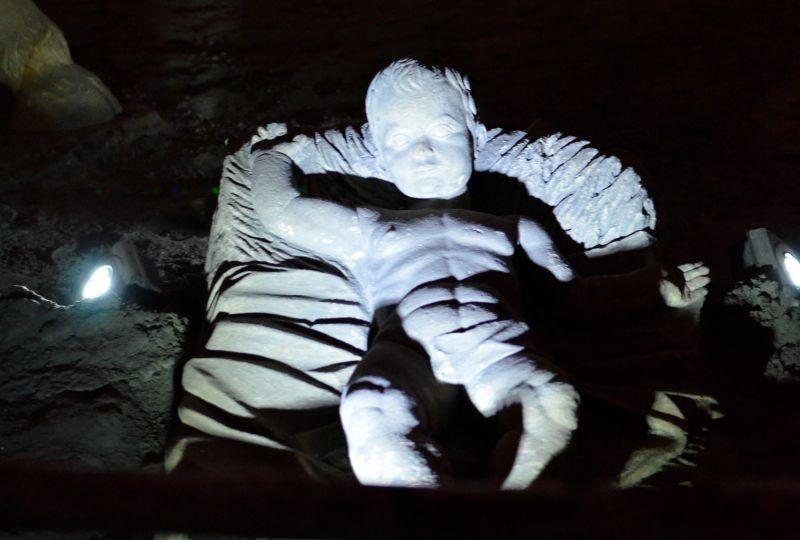
Look out for ripped baby Jesus.
But, I’d say, the most beautiful part of the cathedral isn’t the illuminated cross in the main cathedral, or the dome, or Arch Angel Gabriel blowing a trumpet or even the replica of Michelangelo’s “Creation of Man” scene from the Sistine Chapel, but is actually the sculpture tucked around the corner.
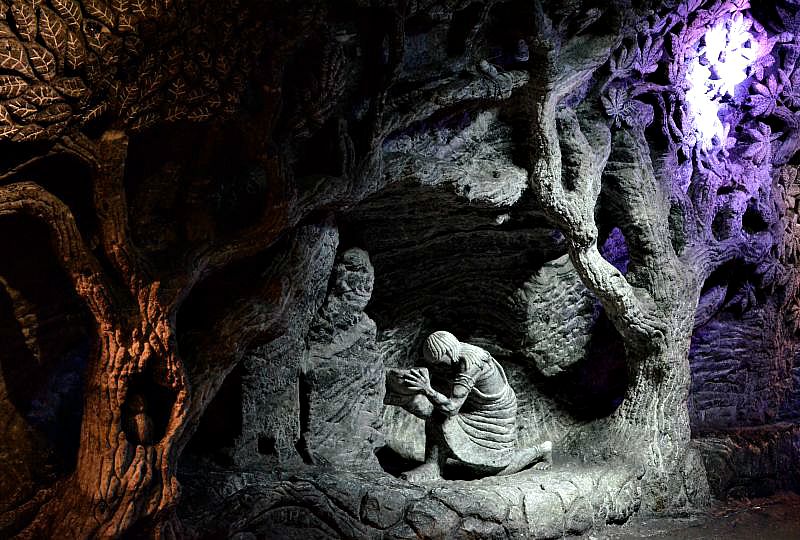
It shows a Muisca man making an offering to perhaps a Zip or Cacique, or tribe leader. And while it’s not the biggest piece in the cathedral, or the most spectacular, there is a peace and a quietness about the sculpture that I really love. If nature was a church, than this is what it would like.
Pin this post for later
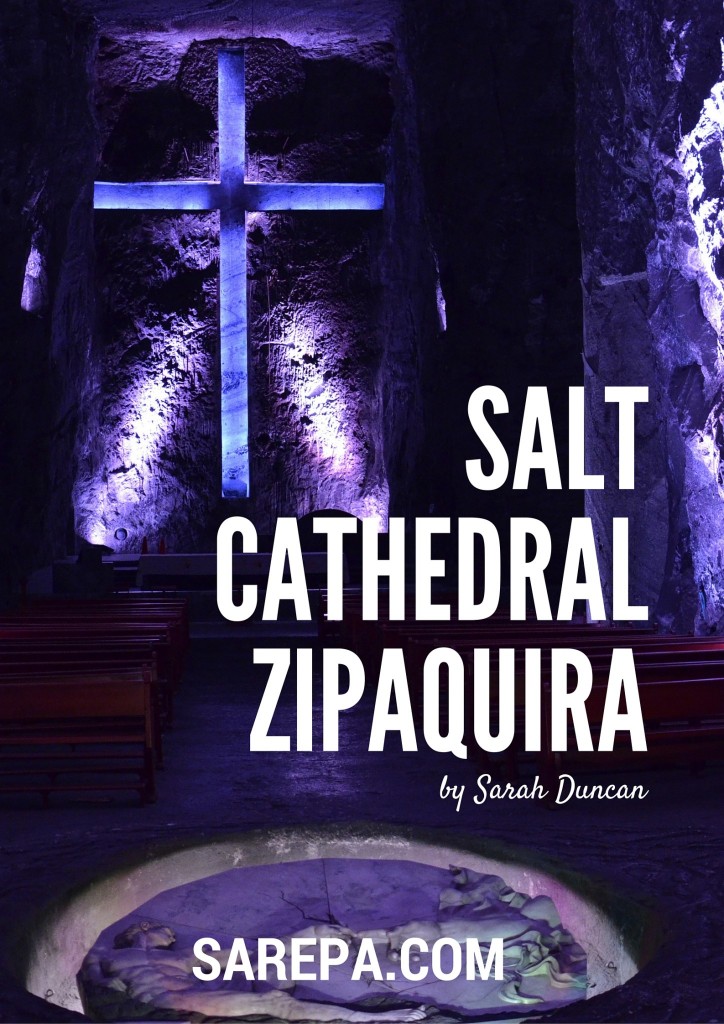
Sarepa was invited to visit the Salt Cathedral of Zipaquira by Colombia4u. To find out more about the tour, click here. All opinions are her own.
Sign up to receive your 15-day Inspire Guide to Colombia
[mc4wp_form]

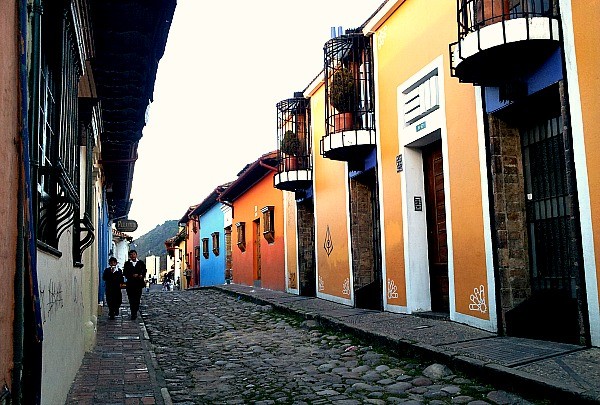





Those pictures are amazing, I’m surprised this place isn’t better well known (in the UK)
So true, Drew! Let’s spread the word! 🙂